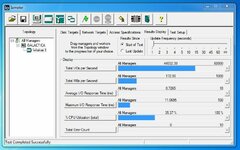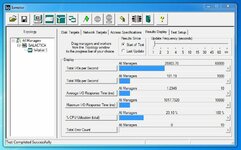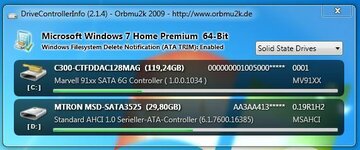Align I/Os On
The Align I/Os On control group specifies the alignment of each I/O on the disk,
shown in the Alignment field (default Sector Boundaries). If the value of this field is
n bytes, every I/O will begin at a multiple of n bytes from the beginning of the disk.
You can select any value from 1 byte to 1023 MB + 1023 KB + 1023 bytes, but the
specified value must be a multiple of the disk’s sector size. Entering the value 0 or
selecting the Sector Boundaries radio button causes I/Os to be aligned on sector
boundaries. (This value is ignored by network workers.)
Note: If the Alignment field is set to a value other than Sector Boundaries and the Size
value is not a multiple of the Alignment value, sequential I/Os will not be truly
sequential. For example, if the Size is 3KB and the Alignment is 2KB, each sequential
3KB I/O will be followed by a 1KB “hole” before the beginning of the following I/O.
Reply Size
The Reply Size control group specifies the size of the reply to each I/O request, shown
in the Reply field (default No Reply). You can select any value from 1 byte to 1023
MB + 1023 KB + 1023 bytes, limited only by the amount of virtual memory available.
Entering the value 0 or selecting the No Reply radio button causes no reply to be sent.
If the Reply field is set to a nonzero value, whenever an I/O request completes, it is
immediately followed by a reply in the opposite direction — that is, a read will be
followed by a write, or a write will be followed by a read. The size of the request is
specified by the Size field, and the size of the reply is specified by the Reply field. The
request and reply together are called a transaction. The time from the initiation of the
request to the completion of the corresponding reply is recorded for each transaction,
and the maximum and average transaction time and the average transactions per second
are reported.
If a reply is specified, the direction (read or write) of the reply is always the opposite of
the corresponding request, while the alignment and random/sequential nature of the
reply are the same as the corresponding request. If Burstiness is also specified, the
Burst field specifies a number of transactions (request + reply) rather than a number of
simple I/Os.
This feature can be used to determine round-trip latency in network testing, or to
specify a strict alternation of reads and writes in disk testing.



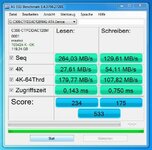
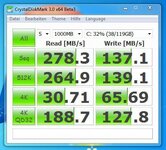
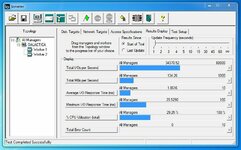
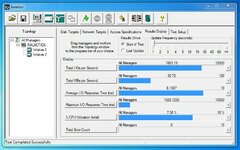
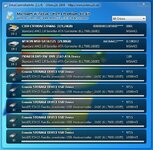
 ):
):

